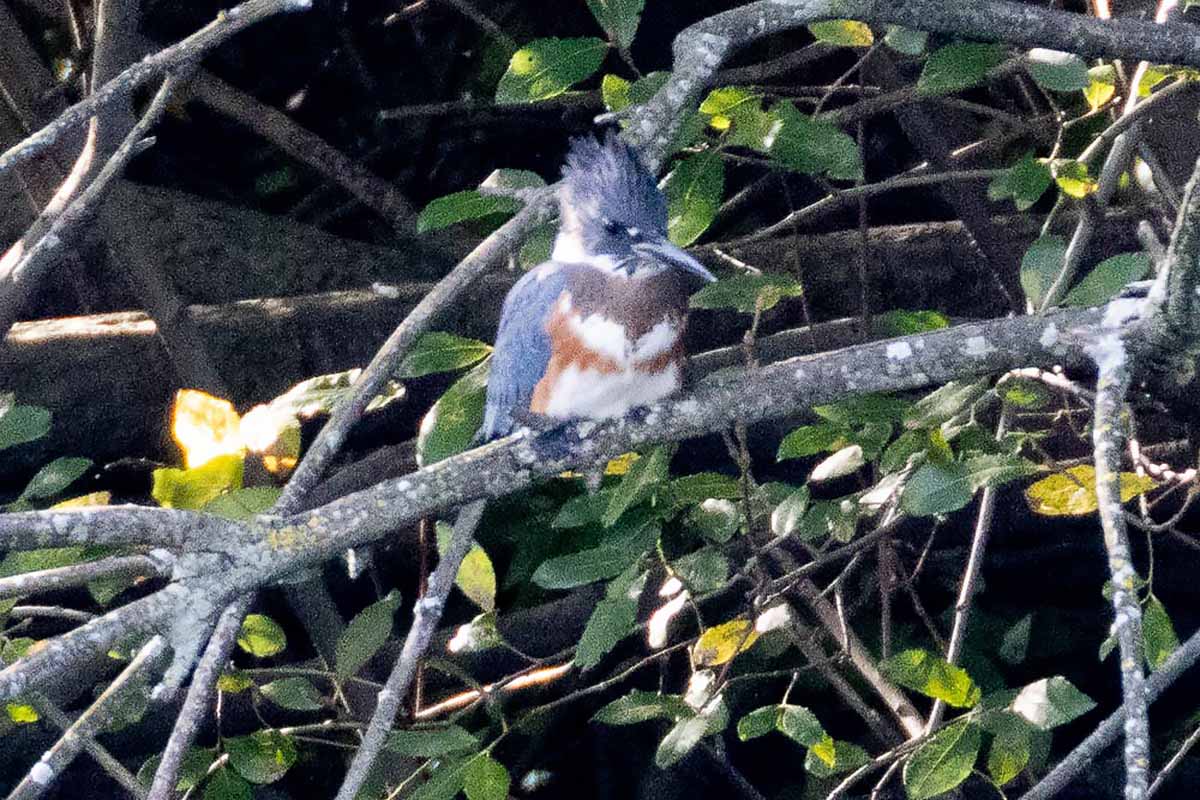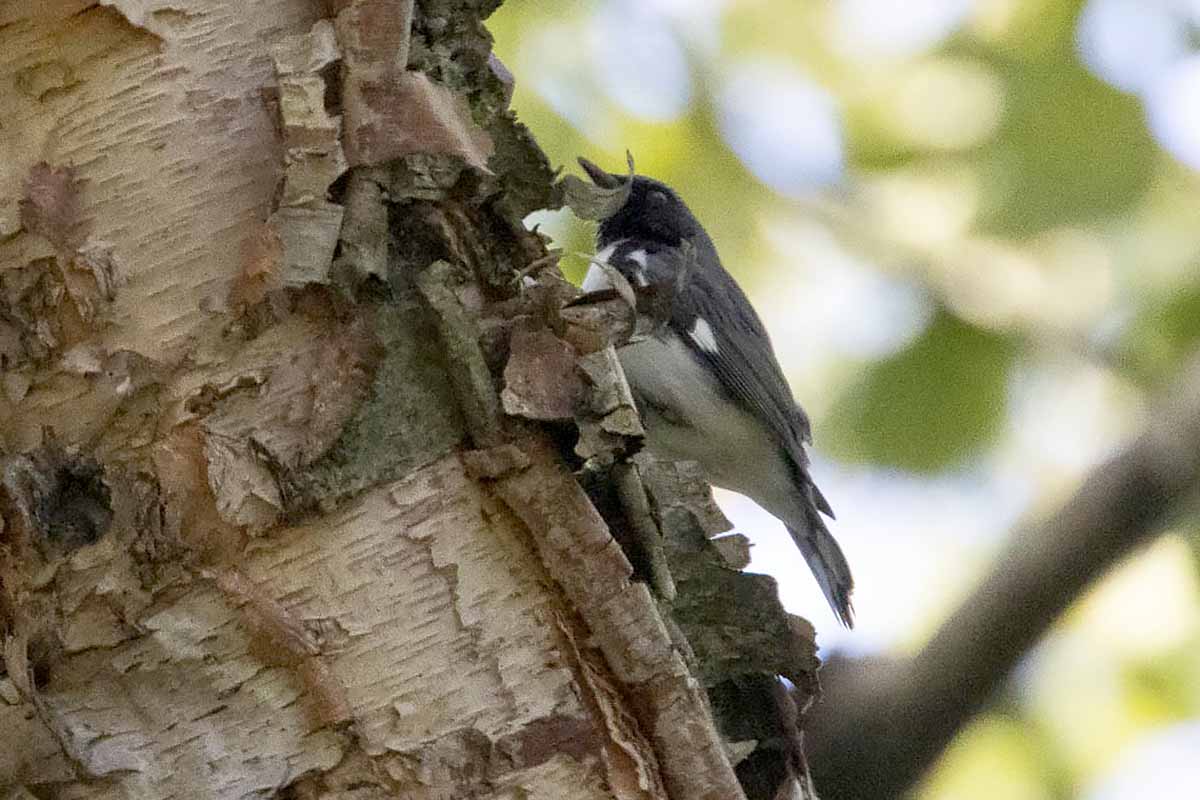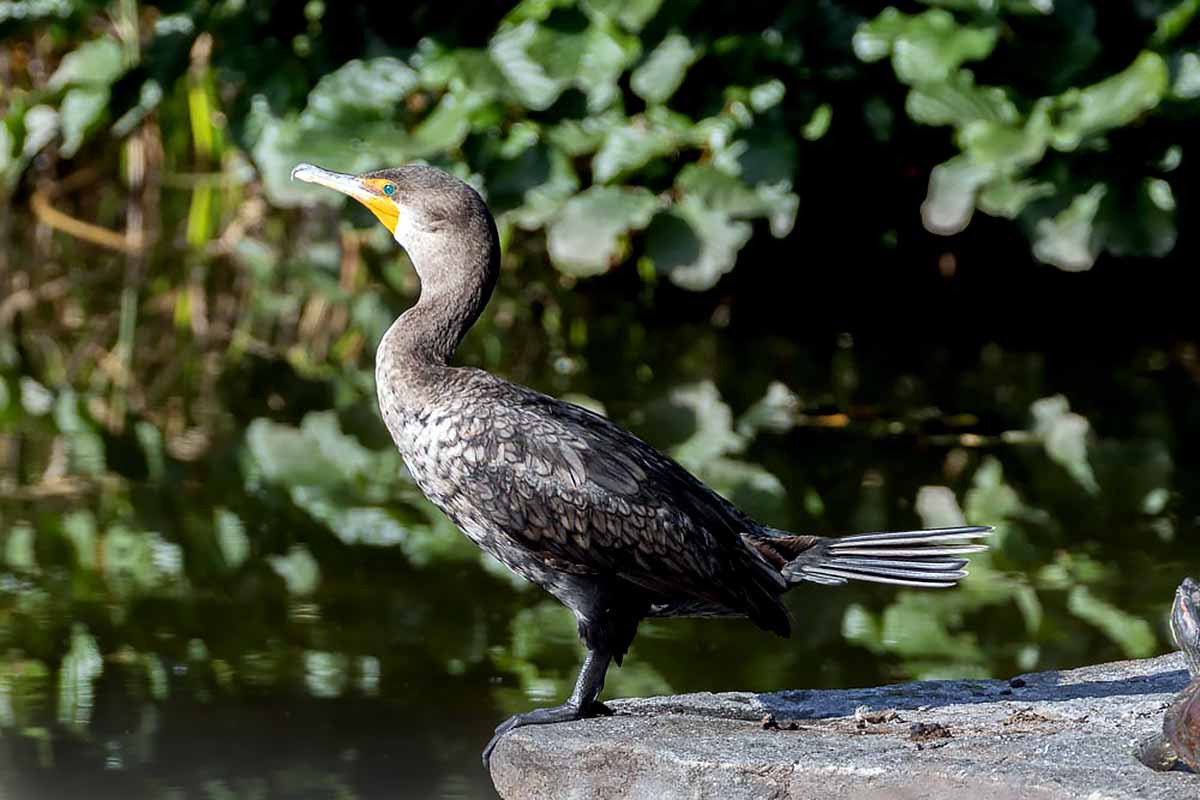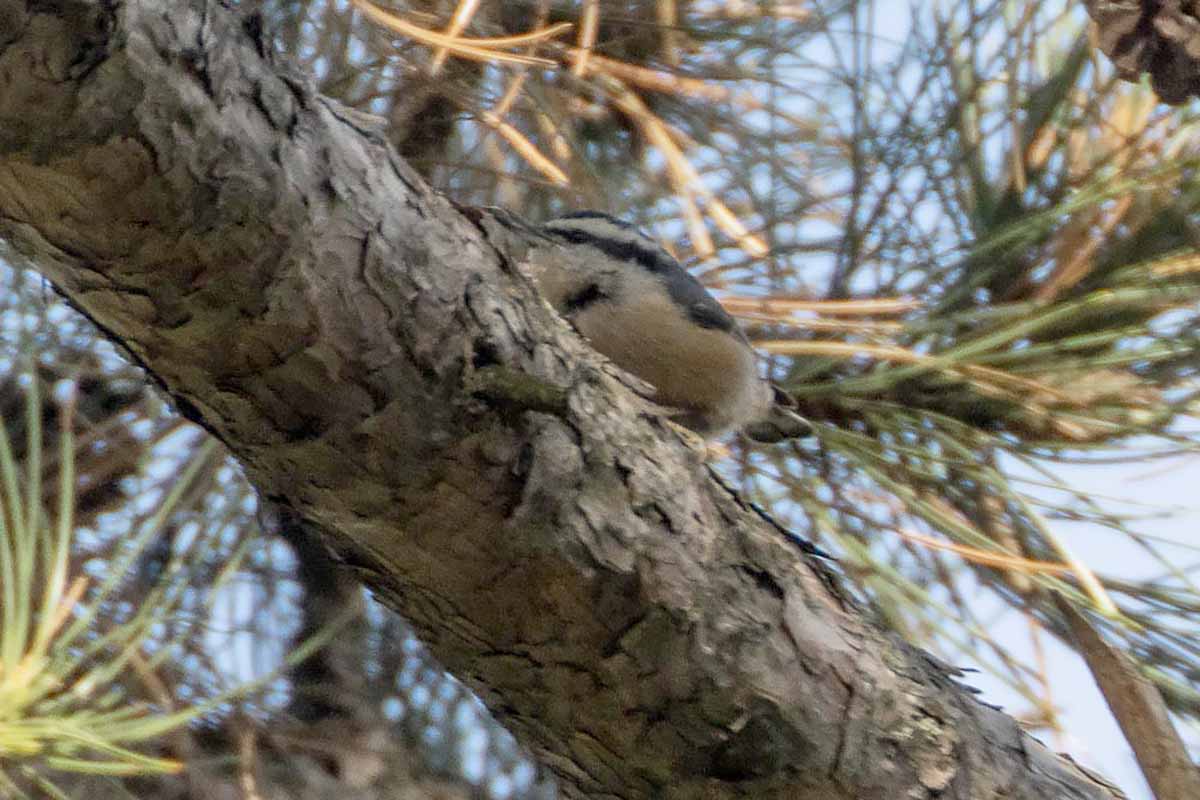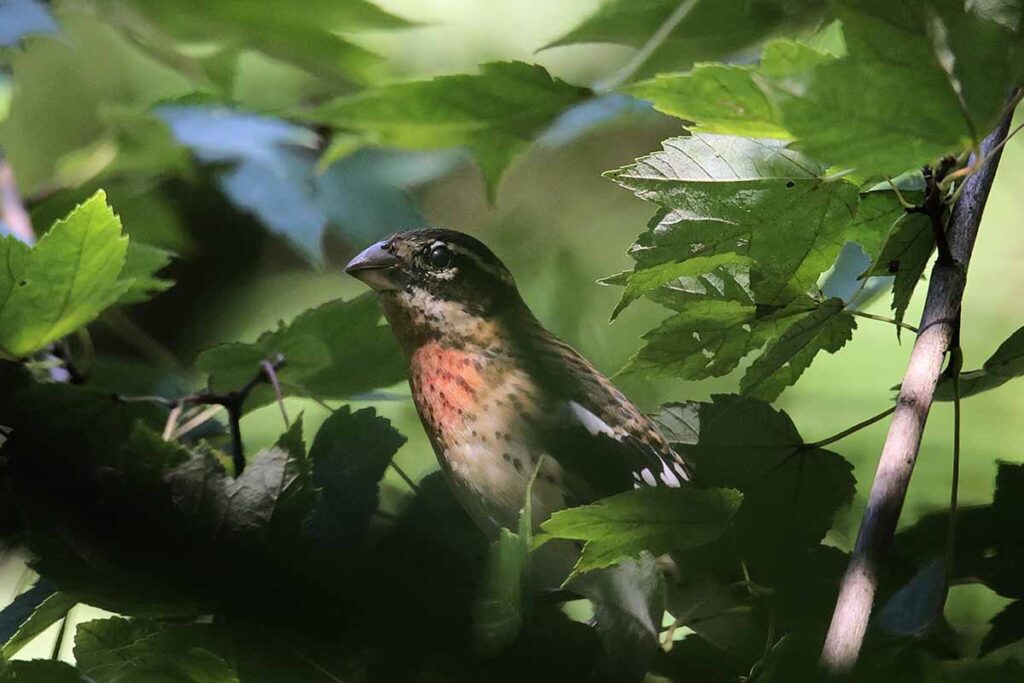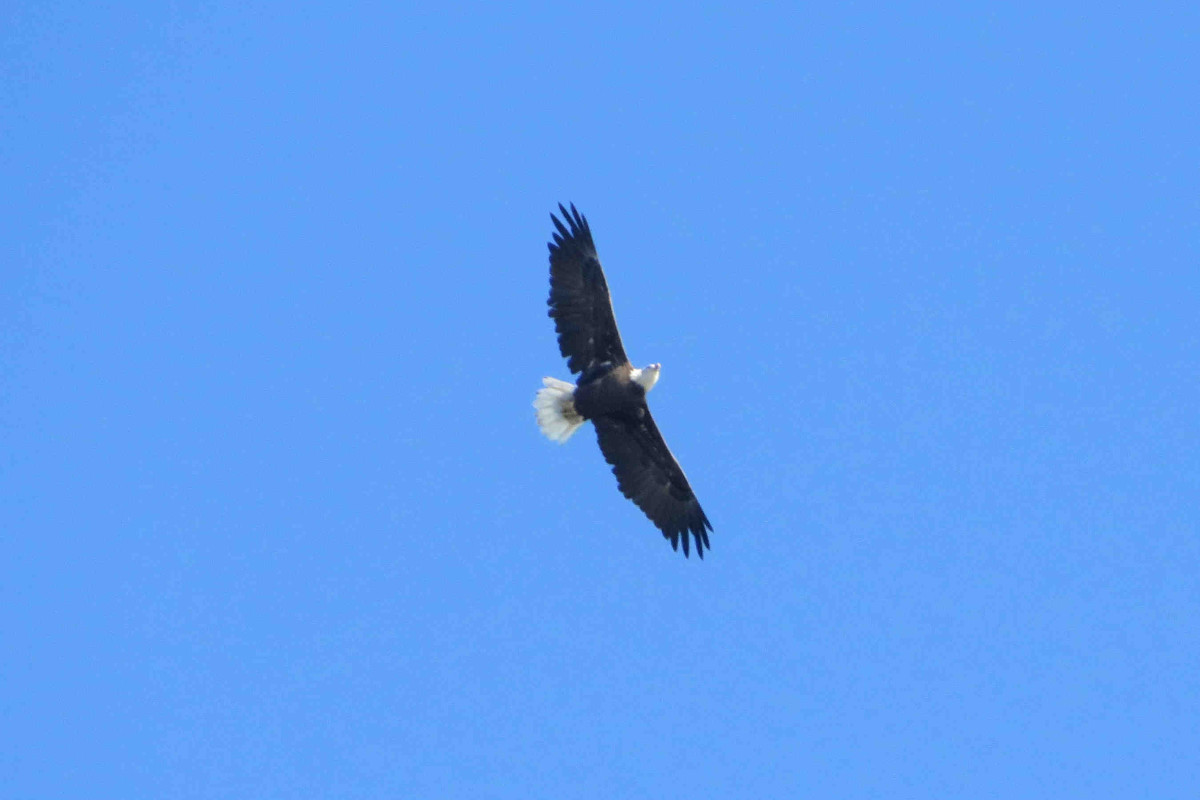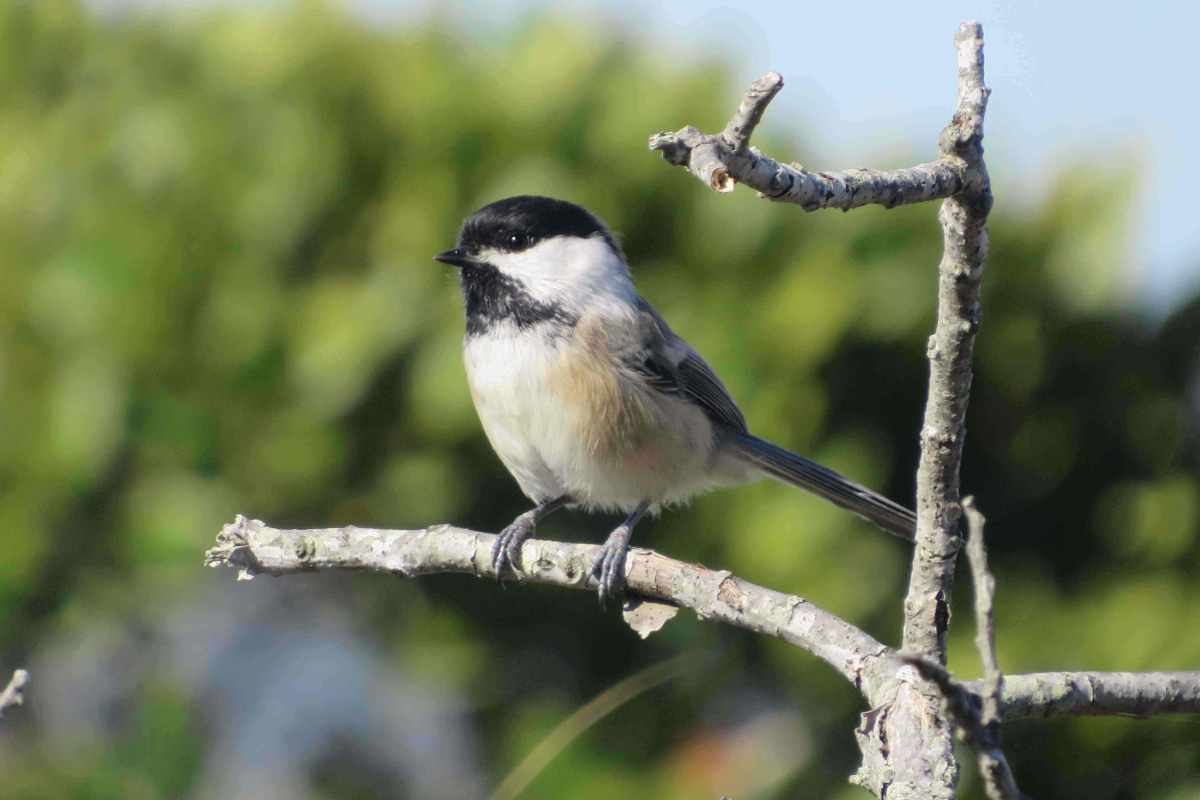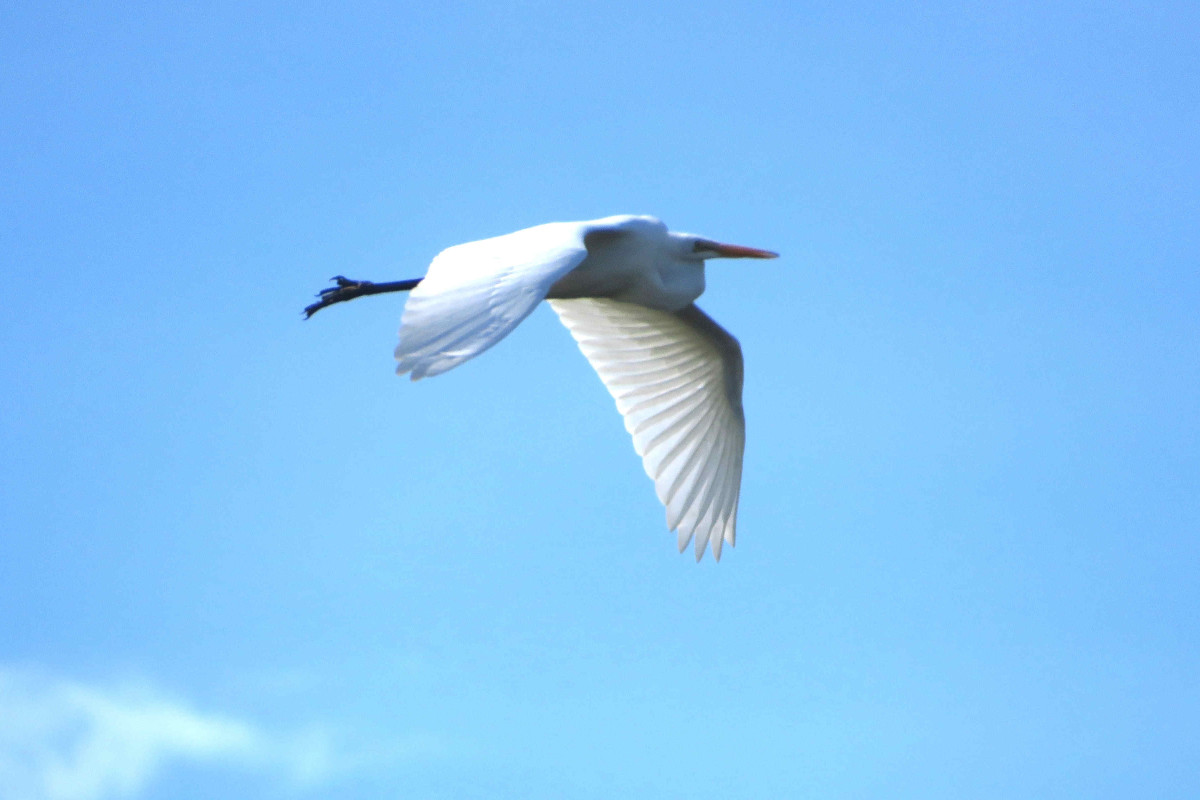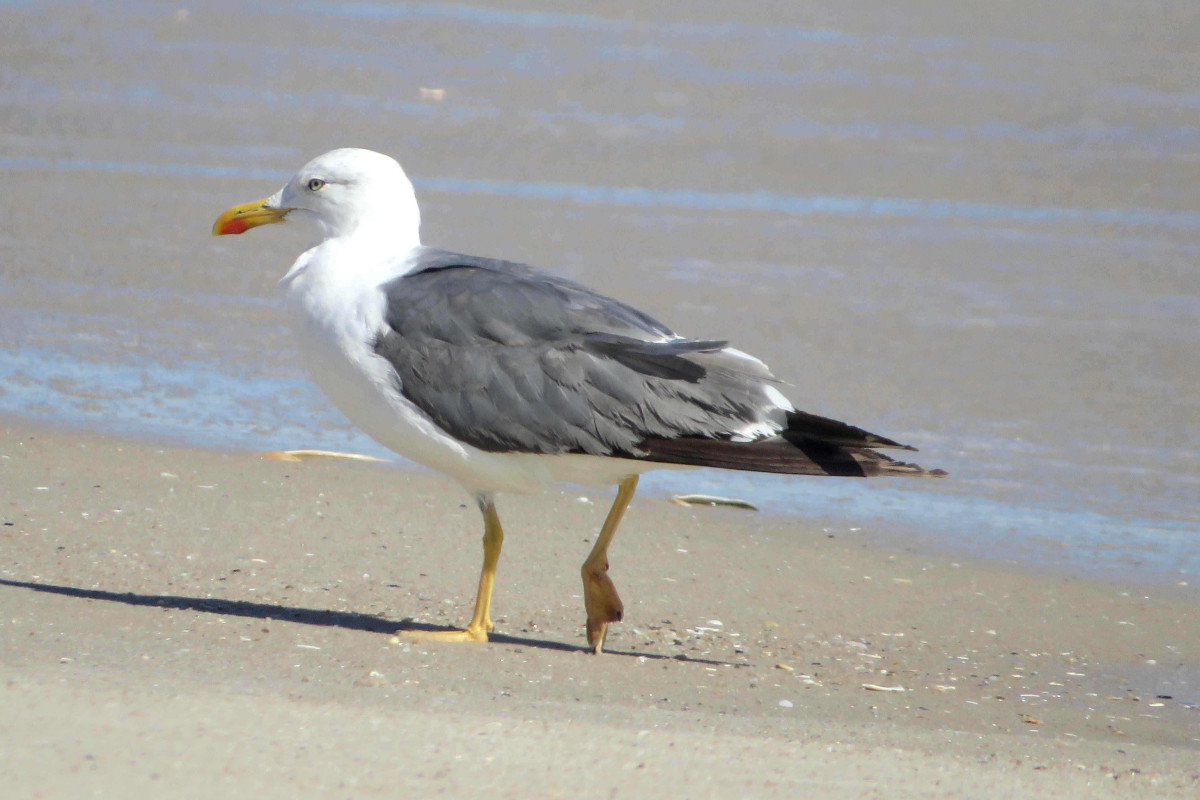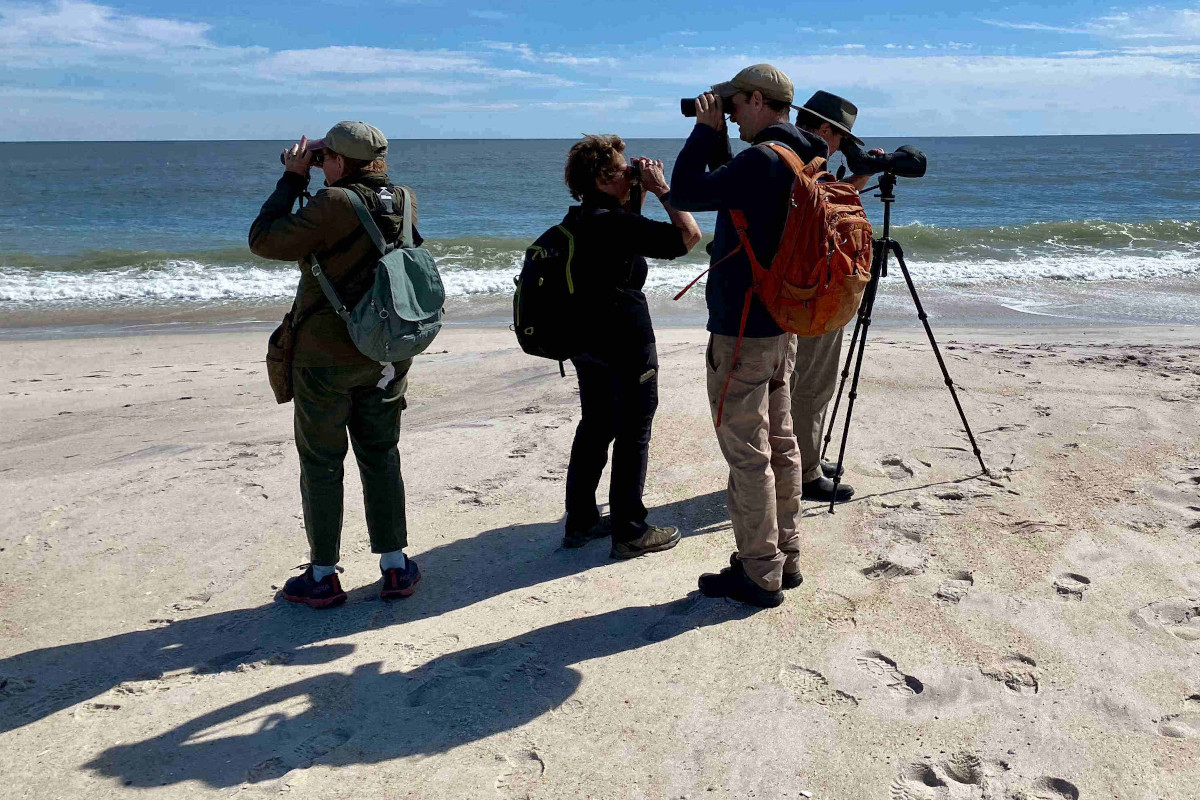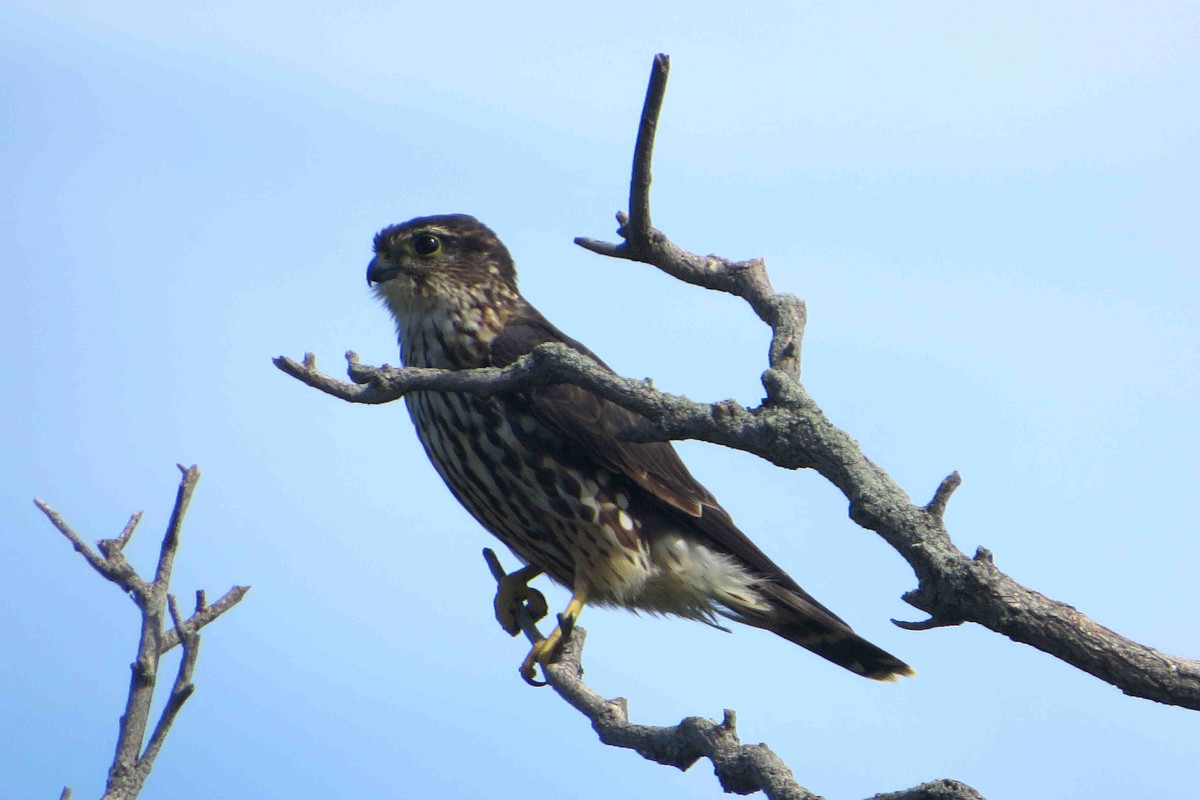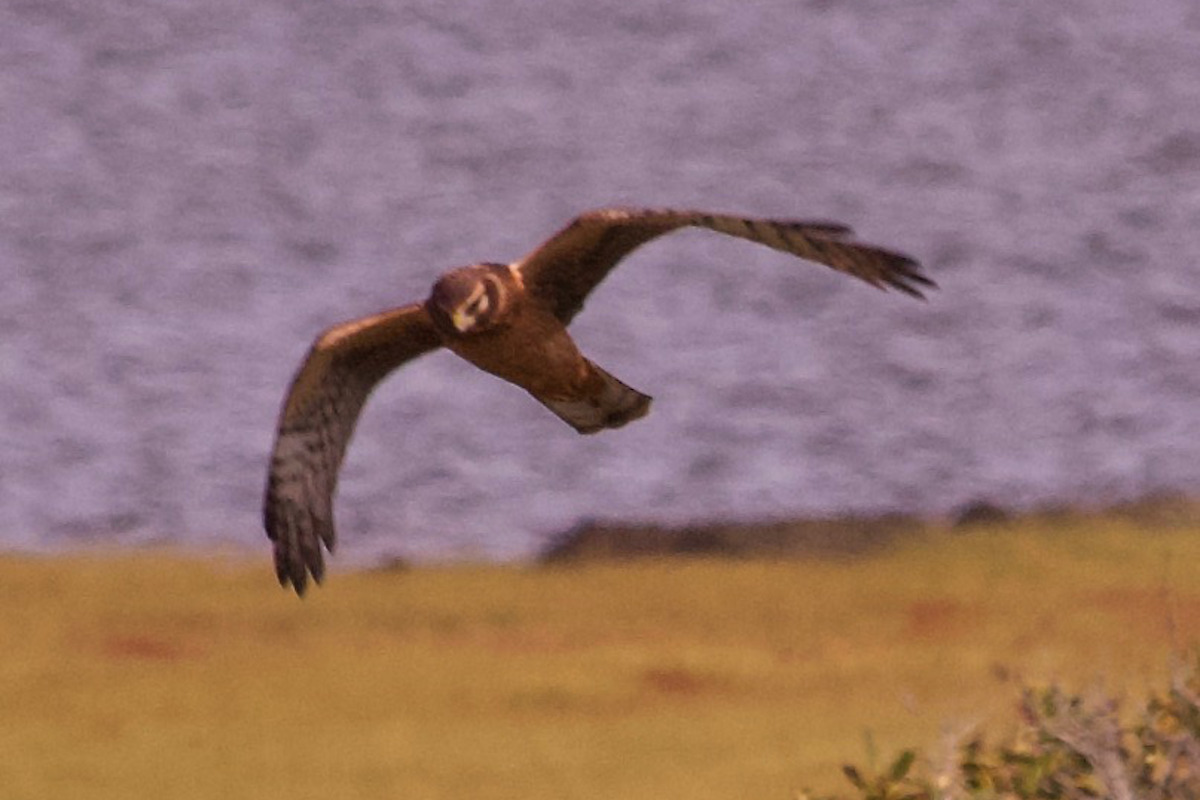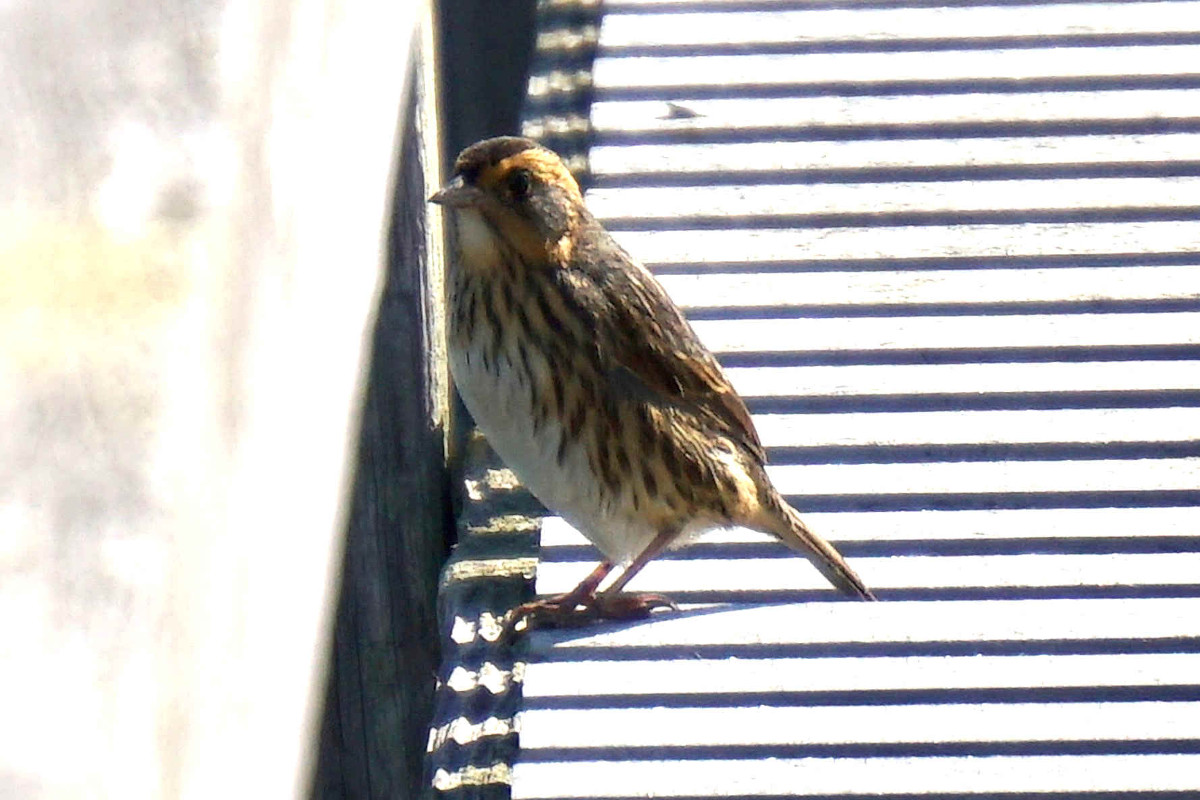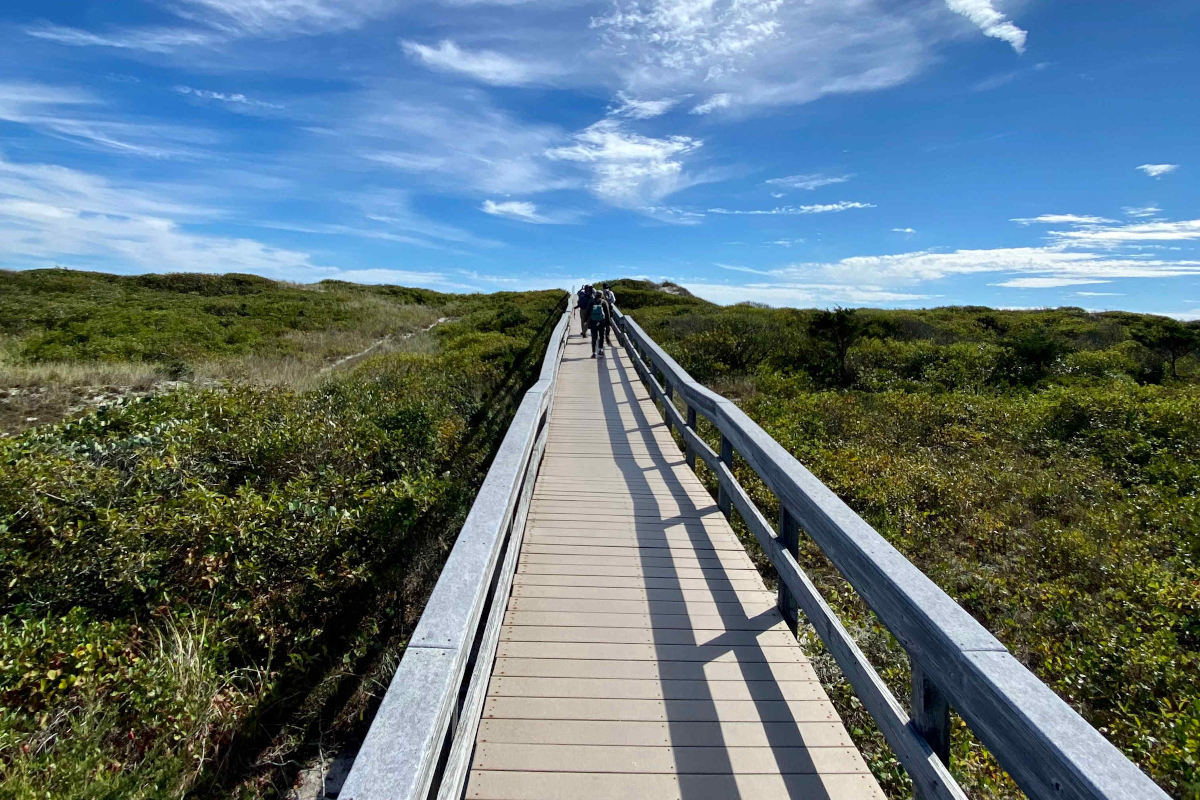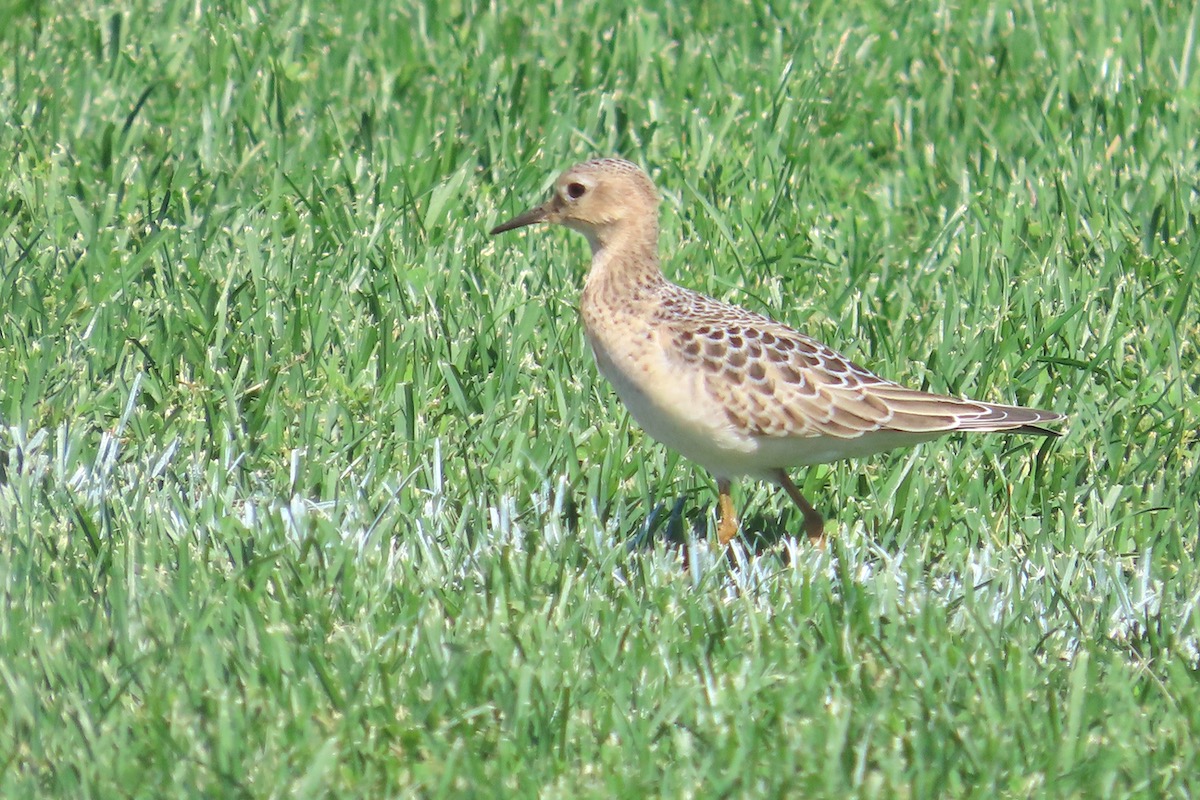Staten Island with Seth Wollney, 10/08/2022
Registrar: Judy Rabi
Participants: 8
Weather: Sunny, 59-62 degrees, winds north by northwest 8-15 mph
Bird Species: 71
We started our day at Conference House Park on the southeastern edge of Staten Island. As we walked the paths of the park we spotted many species of warblers, including Cape May, Blackpoll, Nashville, and Pine. There were also a variety of other song birds: Purple Finch, Indigo Bunting, Lincoln Sparrow, Belted Kingfisher, etc. While we did see a Swainson’s Thrush, we were surprised that at this date not a single Hermit Thrush was seen. Several species of raptors, including Bald Eagle (mature and immature), Merlin, American Kestrel, migrating Sharp-shinned Hawks, and Osprey were spotted. A Green Heron, well hidden behind a tree in a marshy area, was present. One of the most interesting sights, seen each year, was the incredible number of migrating Blue Jays pirouetting through the sky in wave after wave.
At the Conference House itself, Seth shared with us the history of this 18th-century home, as well as that of other significant historical figures and sites on Staten Island.
From the Conference House we made our way to Great Kills. We were more than excited to see two Common Nighthawks here, one flying very high and the other quite low and missing its tail.
Our last stop was Miller’s Field. This year only one shorebird was seen at the pond, a Semipalmated Sandpiper, missing part of its left leg. A rewarding end to our day were the White-crowned and Clay-colored Sparrows feeding among more common sparrows.
A huge thank you to Seth whose incredible birding skills and knowledge of the flora, fauna, and history of Staten Island added so much to our birding experience.
Species Lists
Birds
Brant
Canada Goose
Mute Swan
Mallard
Common Nighthawk
Chimney Swift
Semipalmated Sandpiper
Laughing Gull
Ring-billed Gull
Herring Gull
Great Black-backed Gull
Great Cormorant
Double-crested Cormorant
Green Heron
Turkey Vulture
Osprey
Sharp-shinned Hawk
Cooper’s Hawk
Bald Eagle
Red-tailed Hawk
Belted Kingfisher
Yellow-bellied Sapsucker
Red-bellied Woodpecker
Hairy Woodpecker
Northern Flicker
American Kestrel
Merlin
Eastern Wood-Pewee
Eastern Phoebe
Blue Jay
American Crow
Ruby-crowned Kinglet
Golden-crowned Kinglet
Red-breasted Nuthatch
White-breasted Nuthatch
Carolina Wren
European Starling
Gray Catbird
Northern Mockingbird
Swainson’s Thrush
American Robin
House Sparrow
House Finch
Purple Finch
American Goldfinch
Chipping Sparrow
Clay-colored Sparrow
Dark-eyed Junco
White-crowned Sparrow
White-throated Sparrow
Savannah Sparrow
Song Sparrow
Lincoln’s Sparrow
Swamp Sparrow
Brown-headed Cowbird
Common Grackle
Black-and-white Warbler
Nashville Warbler
Common Yellowthroat
American Redstart
Cape May Warbler
Northern Parula
Magnolia Warbler
Blackpoll Warbler
Black-throated Blue Warbler
Palm Warbler
Pine Warbler
Yellow-rumped Warbler
Black-throated Green Warbler
Scarlet Tanager
Indigo Bunting


